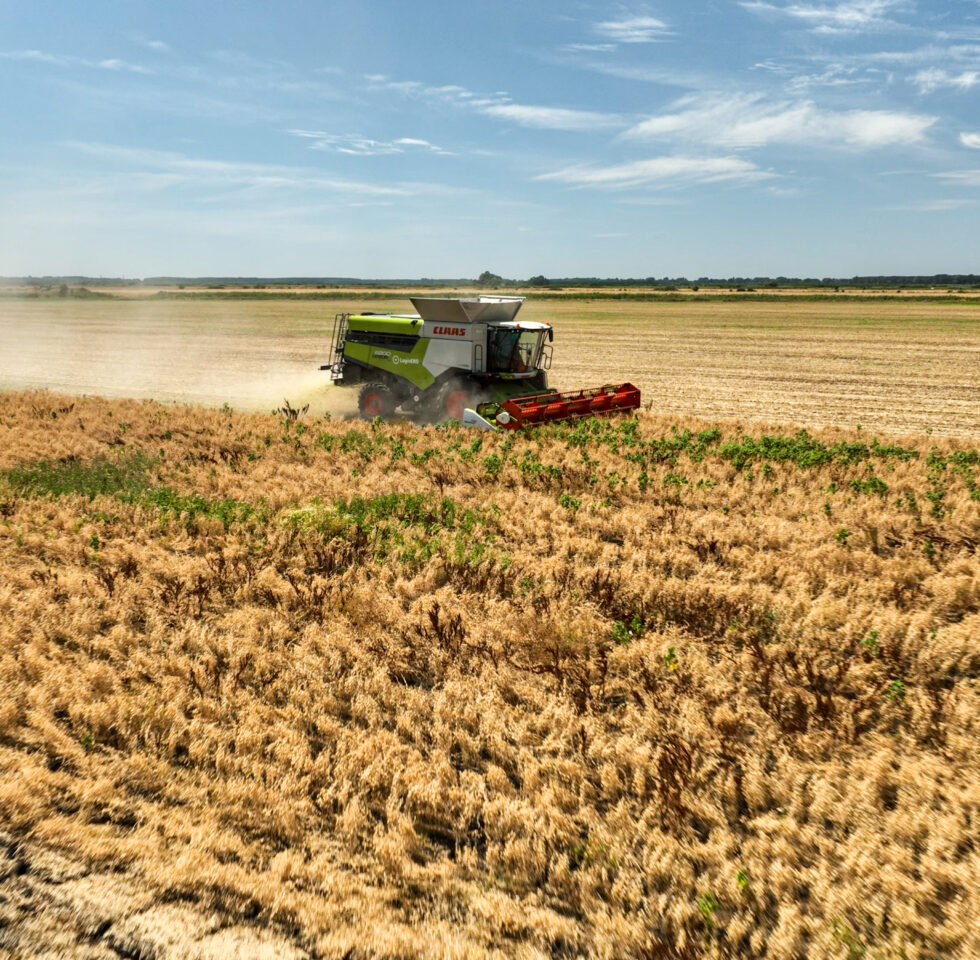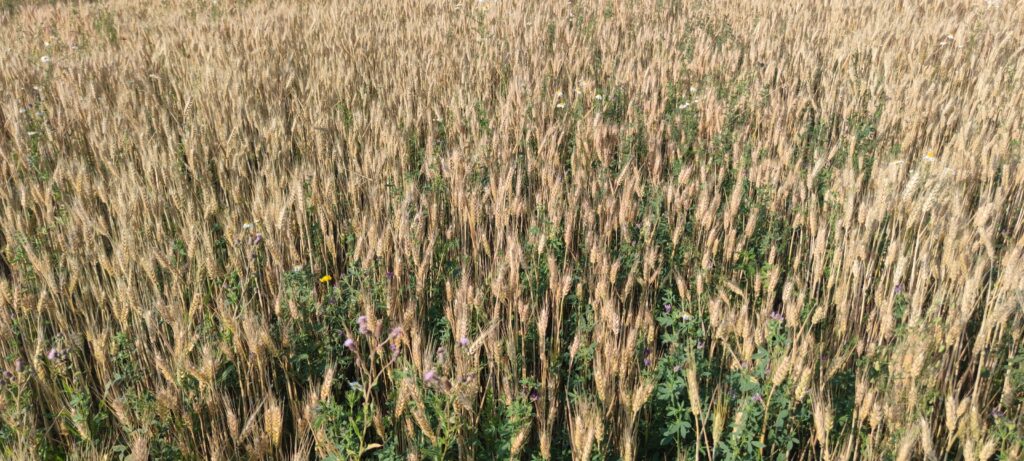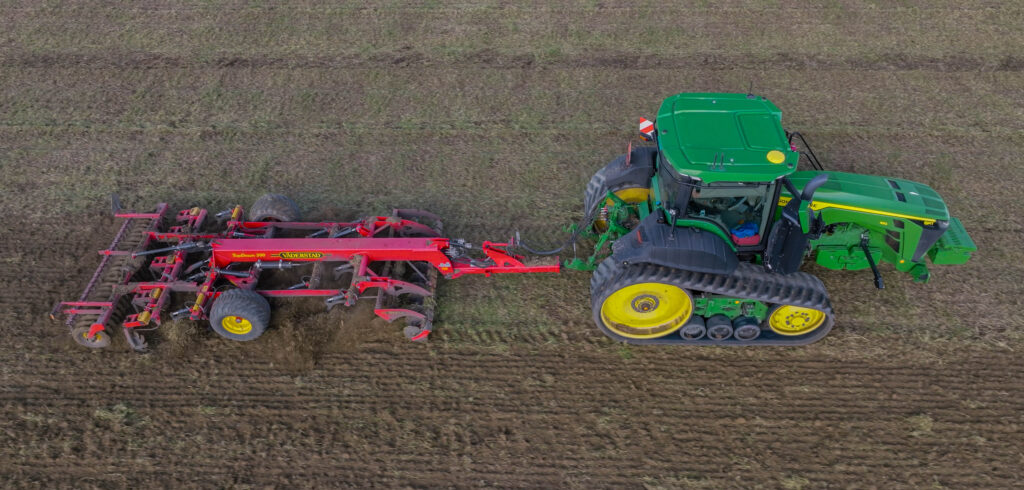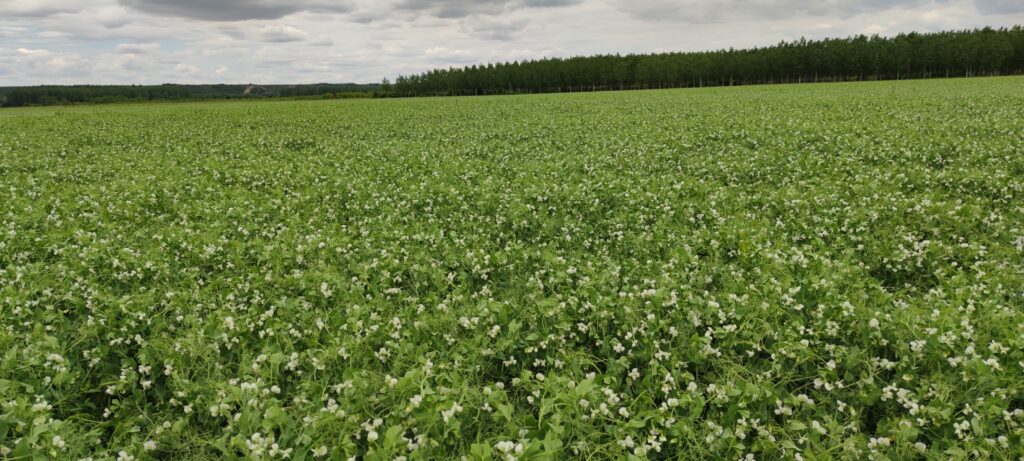How We Handle Late Weeds in Organic Flax
June 25, 2025Ahead of this year’s flax harvest, we tackled late-stage weeds with the Top Cut Collect. Learn how we cleaned up the field and why it was worth it.
Read articleDid you know that legumes release 5–7 times fewer greenhouse gas emissions per unit area compared to other crops? And this is not their only benefit.

As the world faces increasing challenges of food security, climate change, and energy demands, sustainable agriculture is becoming more crucial than ever. Legume crops could be the key to addressing these challenges by delivering multiple benefits in line with sustainability principles. Legumes not only provide high-quality food and feed, but they also have the potential to contribute a substantial quantity of nitrogen while significantly reducing greenhouse gas emissions (GHG). Compared to other crops, legumes release 5–7 times fewer GHG per unit area, and they also allow for carbon sequestration in soils and reduced fossil energy inputs thanks to nitrogen fertilizer reduction.

At LoginEKO, we’ve discovered that legumes can be competitive crops and, due to their environmental and socioeconomic benefits, can be introduced into modern cropping systems to increase crop diversity and reduce the use of external inputs. They also perform well in conservation systems, intercropping systems, as well as in low-input farming systems. Let’s take a closer look at how we see the benefits of legume farming and their potential in agriculture.
At LoginEKO, we introduced legumes into agricultural rotations as a way of reducing the use of fertilizers and energy in our arable systems. Thanks to nitrogen fertilizer reduction, corresponding to 277 kg ha−1 of CO₂ per year, legumes can induce a saving of fossil energy inputs in the system. Consequently, they lower GHG emissions such as carbon dioxide (CO₂) and nitrous oxide (N2O). Studies demonstrated that legume crops emit around 5–7 times fewer GHG per unit area compared to other crops.
Legumes are especially valuable in lowering the N2O emissions, which represent “only” about 5–6% of the total atmospheric GHG, but are much more active than CO₂. Our agronomists explained to us that legumes are unique in nature for the possibility of entering into a symbiotic relationship with bacteria from the genus Rhizobium, and the biological fixation of atmospheric nitrogen. This phenomenon represents the most efficient way of ecologically clean provision of nitrogen for other cultivated plants. However, we need to be aware that the influence of legumes in reducing GHG also depends on the management of the agro-ecosystems in which they are included.
Legumes can also emerge as a potential solution to prevent excessive use of external inputs such as fertilizers and agrochemicals because grain legumes are not susceptible to the same pests and diseases as the main cereal crops (non-host). Grain legumes as break crops can therefore contribute to pests, diseases, and weed control by contrasting their specialization and helping stabilize the agricultural crop community composition.
Food legumes occupy a minimal part of arable land, mostly dominated by cereal crops. Grain legume yields are considered to be more variable than those of cereals, and yield fluctuations are one of the main reasons farmers give for not growing these crops. The low diffusion of legumes’ cultivation is also due to reduced and unstable yields and susceptibility to biotic and abiotic stress conditions. However, the experience in LoginEKO fields is very encouraging. Winter pea grain yields average 3.3 t/ha with 21–25% crude protein. Yields of chickpeas are about 1.8 t/ha, and of winter broad beans over 2 t/ha.

At LoginEKO, we use the symbiosis offered by legumes intensively, which is why we grow winter peas as green manure on 663 ha, which represent 20% of our area. In this way, we ensure optimal conditions for growing cereals and oil crops. Climate and soil conditions have to be taken into account. Winter pulses are very well adapted to the agro-ecological conditions of the Banat in Serbia, where our farm is situated. By sowing in October, we affect the postponement of flowering to the beginning of May when the temperatures are still moderate and there are sufficient water reserves in the soil. This helps us avoid the negative impact of the drought characteristic of crops from spring sowing. By cultivating legumes, we can avoid numerous abiotic and biotic stresses, which can lead to higher and more stable grain yields.

The production of pulses at LoginEKO in 2023 is taking place on an area of approximately 190 ha. The largest area is occupied by winter protein peas, followed by chickpeas (winter and spring). The production of broad beans is still in the experimental phase, and in the fall we are also planning experiments with winter beans. For lentils, we believe that it will be possible to grow them in intercropping with spring barley.

As you can see, we do a lot of experiments and research in order to find the best solutions for our organic farming. In this way, we’ve already gained a great deal of knowledge about green manure, and we are sharing all of this with you to demonstrate that together we can take important steps to ensure the health of our soil and plants in an environmentally friendly way, and produce ecologically sound, healthy food without residues of harmful substances.
SOURCES:
Multiple benefits of legumes for agriculture sustainability: an overview
Legumes: Health Benefits and Culinary Approaches to Increase Intake:
Ahead of this year’s flax harvest, we tackled late-stage weeds with the Top Cut Collect. Learn how we cleaned up the field and why it was worth it.
Read articleWe’re back in the field with our chickpea cultivation series! See how we tackle weeds after emergence using inter-row cultivation.
Read articleTwo days, three farms, one shared goal: growing hemp more sustainably. Here’s what we learned and shared during our tour of Prekmurje.
Read article